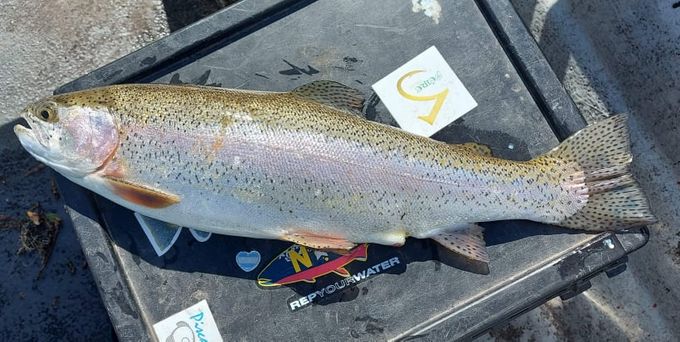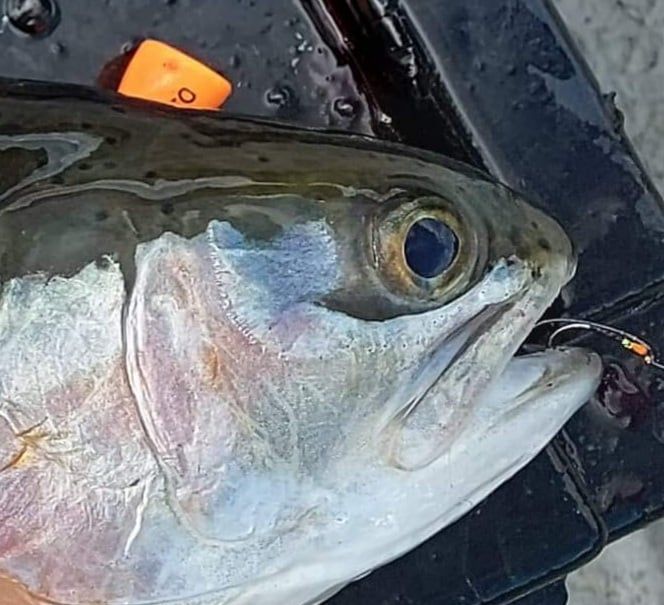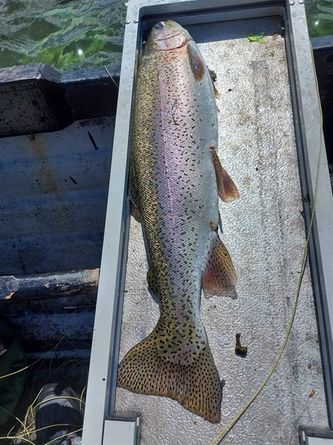Buzzers ,Buzzers, Everywhere
Apologies, time has flown by and i had not got a chance to update my Blog. I missed the Duckfly due to the pandemic so my first trip out was at the beginning of may. So here we go with the first one of the year, hopefully i will get to do more bloggs, but only time will tell.
March to April is when the proper first hatch on most lakes take place. i am talking about buzzers. These chironomids vary in size and colour depending on what lake or ponds you are fishing. In Ireland it’s the Duckfly. Many lake Anglers take a weekend off to enjoy what can be great sport on our waters. Even though the weather can be very unpredictable, it can be really wet, I mean constant rain or freezing winds that would cut you to the bone. But on the rare occasions conditions can be ideal for the boat angler, light winds mean the Anglers can control their lines and detect the most timid of takes.
In my Experience, wet, windy and cold conditions rarely impacts the chironomids from hatching, but does hamper the Angler. A fast drifting boat (even with the drogue out where allowed)just hampers the presentation that you are trying to achieve. The fish are still feeding and sometimes the sheltered bays are the places to go. The traditional way of fishing this hatch is with three or four buzzers about 4 feet apart on a 20ft leader in conjunction with a midge tip or a floating line. I prefer the FNF Floater and the buzzer lock up line.
The aim of the game is to get the fly’s to fall slowly through the water column without moving them, trying to keep in touch with the flies as the boat drifts . This method is called Static fishing and is an art in itself. You can also fish the washing line with a booby or fab on the point so the fly’s sink slower , if the fish are feeding higher in the wafer. Short casting is also very productive if the fish are high and you can see fish feeding in the surface layer. As I said the most important thing is to NOT move your fly’s. In calm conditions the takes can be explosive and if you are not ready for it, the fish will gain its freedom immediately after taking the fly as it breaks you leader. I always leave a little loop between the rod tip and the water and watch it closely. As the fish takes your fly the loop will lift and as the line tightens I will let the line slide between my fingers as the fish feels the tension and bolts away, eliminating breaks.
The Bung, I do love some Proper Bung Fishing
The last method the bung, a method that has brought a lot of controversy to the sport. This method took a long time to break into lake fishing. It first came into my world when I read about the dry dropper or the clink and dink being employed on the rivers of New Zealand and some years after that on rivers all over the world and is now accepted by the river anglers . But some Lake Anglers still turn their nose up at it. I don’t and I have used it for more than ten years now. I have used it on flat calm days and in force 6 to 7 winds and its outstanding for keeping your fly’s STATIC or as close as possible to static, at the correct depth the fish are feeding at. Saying that the washing line and straight lining buzzers will regularly out fish the bung.
Normally the buzzer hatch early in the day and you will experience a fall of adult fly in the evening. Sometimes you will get a fall of adult fly in the morning too, as the adults go back to the water to lay their eggs.
If this happens you will get the best of both worlds. Two anglers in a boat can be fishing two different techniques, one on dry’s and the other on epoxy’s or light weight buzzers and catch as many fish as their partner.
The thing I love about fishing hatches is that the fly will hatch in different areas at different times and no two days are the same. It might take you a few trips to find the areas that the fly is hatching in and then figuring out what technique is the best on that particular day to catch them. Trying to figure it all out is what makes us go back time and time again..
My first proper day out was in early May on Lough lene, due to the pandemic . The Grey Boy or Campto Buzzer a larger Buzzer was rumoured to be hatching. As i only had a 4 and a half hours to fish. I simply opted for the Bung and 3 buzzers on the day
To make a long story short after catching a few stocked fish i moved out of the area into deper water to try and find the overwintered fish. I wasnt dissapointed. I landed 21 fish, 7 or eight well over 5lb. These fish can go, it was delightful to see the fly line vanish through the rings of the rod, followed by the backing.
A thouroughly enjoyable few hours
Drys, Buzzers and Boobys
Leader material can vary depending on what technique you are employing and where in the world you are fishing, I have fished as low as 3lb tippet for dry’s and as high as 12lb fluro leader for deep buzzer fishing. But my go to line for buzzer fishing , whether i am straight linging, employing the washing line or under the bung is the fulling mill masterclass fluro in 7.12lb or 3x. The Knot strenght is second to none.
Fly choice is very simple, match the color of the buzzer the fish are eating , but the size of hook can be just as important. Hooks in 14 to 10’s straight and curved are what I use. The Fario Barbless hooks are a god send as they are just like the B175 I fish without the barb and as sport can be hectic, it’s great to be able to release your quarry quickly.
If I was to pick out fly’s my choices would be.
Top 4 Buzzers for straight lining, washing line and the Bung.
T-Shirt quill Buzzer
Hot Butt Cheeky Silver
Mirage T-Shirt quill Buzzer
Sneaky Red Hollo Quill Buzzer
Top 4 Dry’s
Mirage quill Shuttle Cock
Black Shuttle Cock
Mirage Butt Shuttle Cock
And of course the Fario Bung , in various colors to suit light conditions
Enjoy your fishing and stay safe.
Latest comments
19.05 | 05:47
Hi Denis
Good meeting last night, and enjoyed reading your blog. Felt I was on the lake with you. Great work
02.05 | 20:42
Hi Dennis loved the article straight to the point .just wondered will the trout feed on the small buzzers all year ?
06.04 | 11:57
Cant wait to read this
01.03 | 03:03
glad u enjoy, ty, will be back when the fishing returns
Share this page



